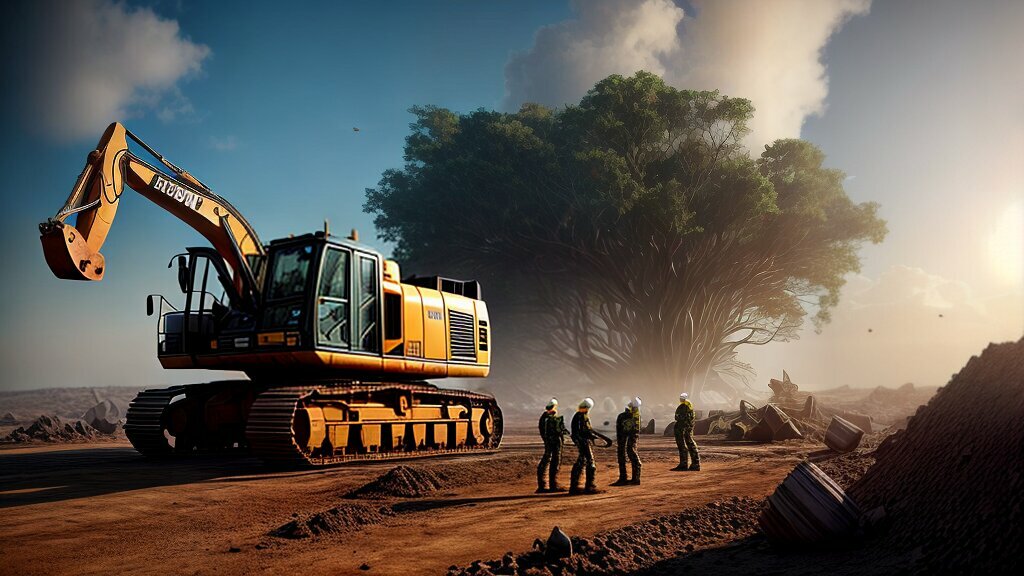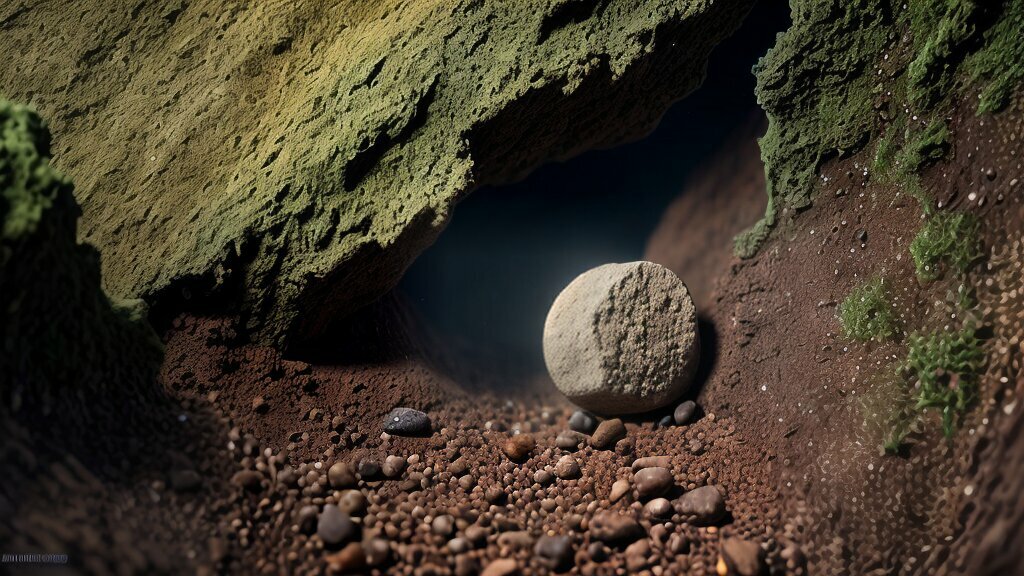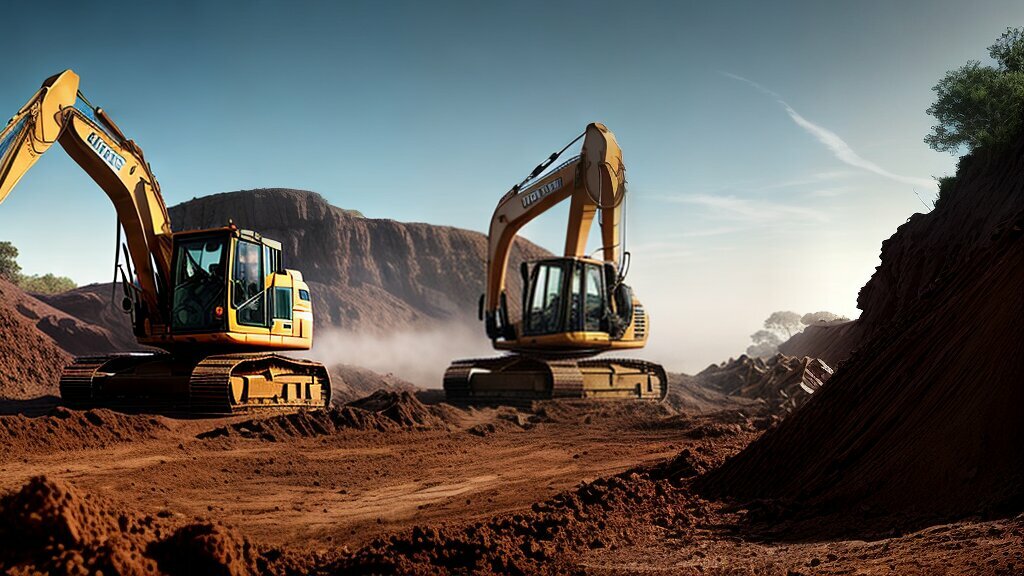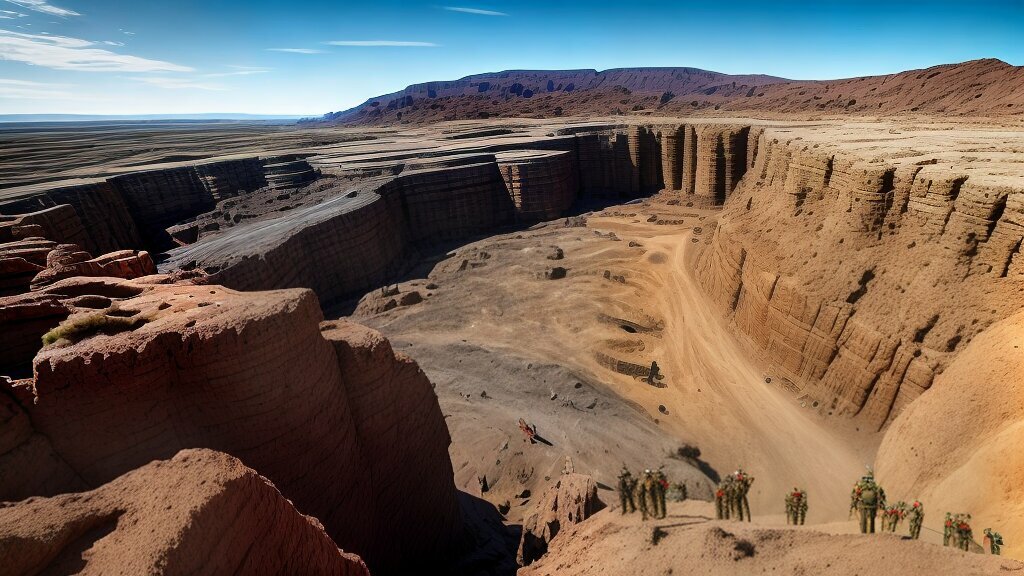Have you ever wondered how deep humans can dig? Digging is a fundamental part of construction, mining, and many other industries, but what are the limits of excavation? The answer may surprise you.
Over the years, humans have made remarkable advancements in digging capabilities. From simple hand tools to massive machines, the technology used for digging has evolved significantly. But just how deep can we dig?
The quest to determine the limits of excavation has long sparked curiosity and scientific inquiry. Researchers have explored the depths of the ocean, drilled through the earth’s crust, and dug into the frozen tundra to uncover the secrets hidden beneath the surface.
In this article, we will delve into the concept of maximum excavation depth and explore the various techniques used for deep digging. We will also highlight notable examples of extraordinary digging projects and address the challenges and risks associated with deep excavation.
Key Takeaways:
- The advancement of digging technology has expanded our excavation capabilities.
- The maximum excavation depth is determined by various factors, including geological conditions and technological limitations.
- Innovative techniques such as tunneling and deep drilling have enabled extensive excavation capabilities.
- Notable examples of extraordinary digging projects showcase the achievements of modern engineering and construction.
- Deep digging comes with challenges and risks, including environmental factors and safety considerations.
Exploring Digging Depth: Maximum Excavation Depth Unveiled
Have you ever wondered how deep humans can dig? The concept of maximum excavation depth has piqued the curiosity of adventurers and scientists alike for centuries. Over the years, technological advancements have expanded digging capabilities, enabling humans to explore the depths of the earth like never before.
Maximum excavation depth is determined by a variety of factors, such as the type of soil, underground water levels, and the capacity of the equipment used for digging. For instance, soft soil is easier to excavate than hard rock, and dry soil is easier to dig than soil that is saturated with water.
| Factors affecting maximum excavation depth | Description |
|---|---|
| Soil type | Soft soil is easier to excavate than hard rock |
| Underground water levels | High water levels can make excavation more challenging |
| Equipment capacity | The capacity of the digging equipment and machinery used |
Despite the challenges, innovative digging techniques have unlocked extensive excavation capabilities, such as tunneling and deep drilling. These techniques enable humans to excavate deeper, providing access to valuable resources, archaeological findings, and geological studies.
Today, modern engineering and construction have pushed the limits of excavation capacity. For example, the Kola Superdeep Borehole in Russia holds the record for the deepest hole ever dug, reaching a depth of over 7.5 miles. The project aimed to study the earth’s crust and upper mantle, showcasing the potential of digging technology.
However, deep excavation also comes with limitations and risks. Geological conditions and environmental factors can make it difficult to excavate, while safety considerations are paramount. It is important to approach digging with caution and careful planning, ensuring the safety of workers and preserving the environment.
The quest to determine how deep humans can dig continues to fuel innovation and exploration. With technological advancements and ingenuity, the limits of excavation continue to be pushed, unearthing the mysteries of our planet’s depths.
Techniques for Deep Digging: Unlocking Extensive Excavation Capabilities
Excavation has come a long way since the early days of basic digging tools. Today, there are a variety of techniques and technologies that enable extensive excavation capabilities, allowing us to dig deeper and more efficiently than ever before. Here are some of the most innovative methods and tools used for deep digging:
- Tunneling: This involves the construction of underground tunnels, which can be used for transportation, water supply, and more. Tunneling machines are capable of boring through soil and rock, creating a safe and efficient way to excavate deep underground.
- Deep drilling: This technique involves drilling deep into the earth’s surface to extract resources such as oil, gas, and minerals. Advanced drilling technologies like hydraulic fracturing have made it possible to access previously unreachable reserves.
- Cut-and-cover: This is a common technique used to construct underground infrastructure, like subways or tunnels. It involves excavating a trench, building the structure inside, and then covering it back up.
These techniques have enabled the construction of some truly remarkable projects, like the Channel Tunnel between the UK and France, which spans a distance of over 31 miles and was completed in 1994. Another incredible feat of engineering is the Gotthard Base Tunnel in Switzerland, which is currently the world’s longest railway tunnel at over 35 miles in length.

While these techniques have expanded our excavation capabilities, they also come with their own set of challenges. Excavating deep underground can be dangerous and requires a significant amount of planning and preparation to ensure the safety of workers and the environment. Additionally, digging through hard rock or unstable soil can be time-consuming and costly.
Despite the challenges, the drive to uncover the secrets of the earth’s surface through deep digging continues to push the limits of what is possible. Who knows what incredible discoveries may be waiting to be unearthed at even greater depths?
Uncovering the Secrets: What Lies Beneath the Earth’s Surface
Have you ever wondered what secrets lie beneath the earth’s surface? As humans, we have a natural curiosity to explore and discover the unknown. Excavation depth and digging capacity play a crucial role in unearthing the secrets hidden beneath the earth’s surface.
Excavation depth refers to how deep humans can dig into the ground, while digging capacity is defined as the maximum amount of material that can be excavated. These two factors are significant in revealing natural resources, archaeological findings, and geological studies that would otherwise remain concealed.
For instance, digging deeper can lead to the discovery of oil, natural gas, minerals, and other valuable resources that can support our daily lives and industries. Archaeological findings, such as ancient artifacts and fossils, can provide insight into the history of our planet and humanity. Geological studies can help us better understand our planet’s structure and phenomena, such as earthquakes and volcanic eruptions.

The significance of excavation depth and digging capacity has led to the development of various techniques and technologies for deep digging. Tunneling, for example, involves digging through solid rock, creating underground passageways for transportation, water supply, and other purposes. Deep drilling allows for the extraction of oil and gas from deep in the earth’s crust.
However, deep digging also comes with limitations and risks. Geological conditions, such as hard rock, unstable soil, or waterlogged terrain, can make digging difficult or impossible. Environmental factors, such as natural disasters or pollution, can also pose significant challenges to excavation projects. Safety considerations, such as the risk of cave-ins or equipment malfunctions, must always be taken into account.
Despite the challenges, the quest to uncover the mysteries hidden beneath the earth’s surface continues. The development of advanced technologies and methods for deep digging has expanded our capacity for excavation, leading to astonishing achievements in engineering and construction. The possibilities are endless, and the curiosity to explore the unexplored depths of our planet is infinite.
Pushing the Limits: Examples of Extraordinary Digging Projects
If you’re wondering just how deep humans can dig, these record-breaking digging projects will blow your mind. Engineers and construction workers have been pushing the limits of excavation for decades, creating incredible structures and mining valuable resources. Here are some of the most extraordinary digging projects in history:
| Project | Location | Maximum Dig Depth |
|---|---|---|
| Kola Superdeep Borehole | Russia | 7.5 miles |
| Montreal Metro Tunnel | Canada | 2.8 miles |
| Gotthard Base Tunnel | Switzerland | 35.4 miles |
| Chuquicamata Copper Mine | Chile | 2.7 miles |
| Bingham Canyon Mine | USA | 0.75 miles |
One of the most impressive digging projects is the Kola Superdeep Borehole in Russia. This deep drilling project aimed to reach the Earth’s mantle, and although it didn’t succeed in that goal, the project still holds the record for the deepest hole ever dug. The borehole goes down 7.5 miles into the Earth’s surface, revealing important insights into the Earth’s crust and geology.
The Montreal Metro Tunnel in Canada is another impressive feat of excavation. This tunnel stretches over 2.8 miles, serving as a major transportation hub for the city. Its construction required innovative engineering techniques to overcome the challenges of the city’s bedrock and groundwater levels.
The Gotthard Base Tunnel in Switzerland is the world’s longest rail tunnel, stretching over 35 miles. Its construction required cutting-edge tunneling machines to excavate through mountains, creating a direct route between Germany and Italy.
The Chuquicamata Copper Mine in Chile is the world’s largest open-pit copper mine, stretching over 2.7 miles wide and 0.6 miles deep. Its excavation has provided valuable resources for the global economy, but it has also raised concerns about environmental impacts and the safety of workers.
The Bingham Canyon Mine in the USA is the largest man-made excavation in the world, stretching 0.75 miles deep and 2.5 miles wide. The mine produces copper, gold, and other valuable minerals, contributing to the country’s economy and infrastructure.
These extraordinary digging projects showcase the incredible achievements of modern engineering and construction. They have pushed the limits of excavation, revealing the secrets hidden beneath the Earth’s surface. Who knows what new depths humans will reach in the future!

Overcoming Challenges: Limitations and Risks of Deep Digging
As impressive as digging to great depths may be, there are inherent challenges and risks that come with the territory. The limitations imposed by geological conditions, environmental factors, and safety considerations can all affect the success of deep digging projects.
One significant challenge is the type of soil or rock being excavated. Harder materials, such as granite or basalt, require more powerful excavation tools and techniques. Conversely, softer materials, like sand or clay, can collapse more easily and require shoring to prevent cave-ins.
Environmental factors are also a concern. Excavating in urban areas can pose hazards to existing infrastructure, such as gas lines or water mains. Digging near bodies of water can lead to flooding or erosion, while excavating in remote areas can face challenges of accessibility and weather conditions.
Furthermore, deep digging presents safety risks to workers involved in the project. Tunnels and shafts require ventilation, and proper safety measures must be in place to prevent accidents, such as cave-ins, explosions, or toxic gas exposure.
Despite the challenges and risks, innovative technologies and construction techniques are constantly being developed to overcome these obstacles. As digging capabilities continue to expand, it is crucial to keep safety and environmental concerns at the forefront of all excavation projects.

“Excavating is a dangerous business, but with proper precautions, the rewards can be incredible.” – Ed Viesturs
Conclusion
Congratulations! You’ve reached the end of our exploration into digging depth and excavation capabilities. Hopefully, you’ve gained a deeper appreciation for the impressive engineering feats that have expanded our ability to dig into the earth’s surface.
While we’ve uncovered several impressive examples of digging depth, it’s clear that there is still so much left to explore. With advancing technologies and innovative techniques, the limits of excavation continue to be pushed, and there’s no telling where we’ll end up in the future.
Keep Digging!
Whether you’re a civil engineer, a construction worker, or simply a curious individual, there’s no denying the thrill of unearthing what lies beneath the surface. So, keep digging! Who knows what secrets you might uncover?
Thank you for joining us on this journey. We hope it’s sparked your curiosity and left you with a sense of wonder about the incredible depths of our planet.







